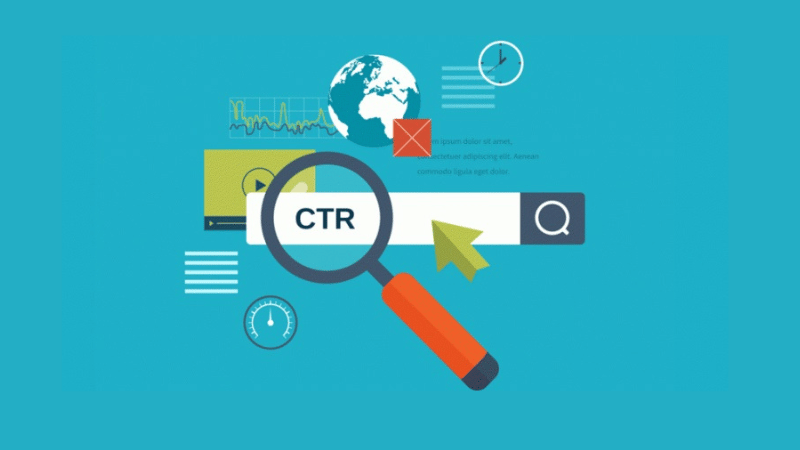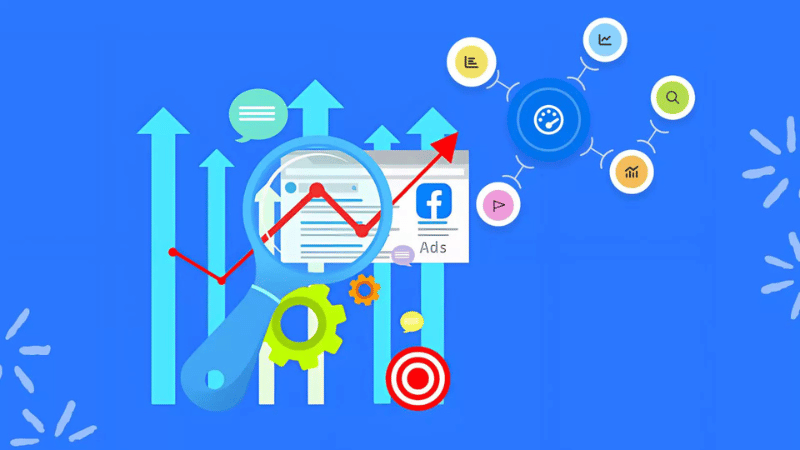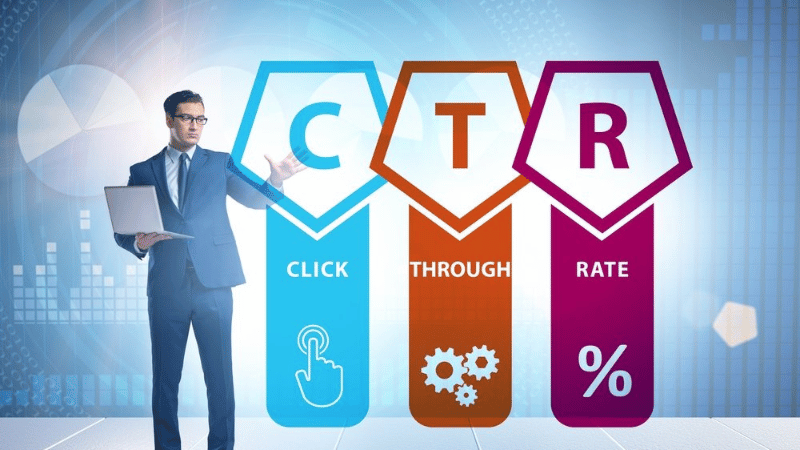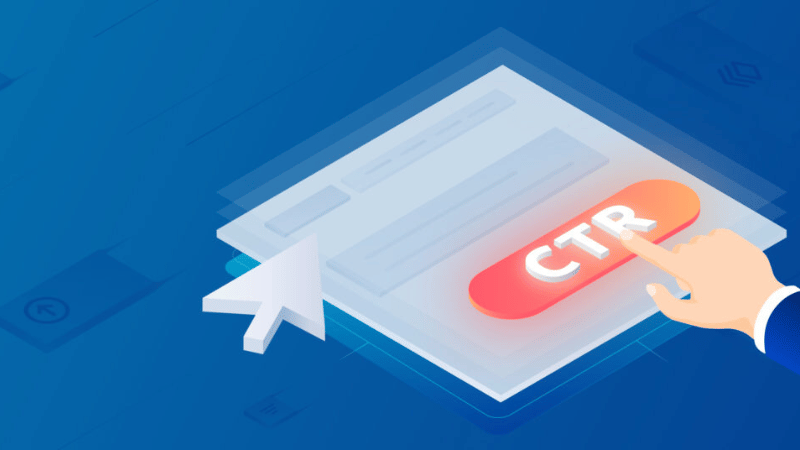Many advertisers are still puzzled as to why their campaigns get good impressions but poor clicks. In reality, the secret lies in understanding and optimizing the CTR metric—the true measure of an ad’s appeal. If your average CTR for Facebook ads hovers around 1–2%, there is significant room for improvement. By refining content, creatively designing visuals, optimizing the audience segment, and testing new strategies, you can easily double, or even triple, your click-through rate. In this article, I will share 7 proven strategies to help you not only exceed the average but also make your ads truly click-worthy.
Decoding Facebook ad CTR – The key to unlocking true effectiveness
When running Facebook advertising, most people focus on cost, impressions, or the number of orders, but often overlook a small yet powerful metric: CTR (Click-Through Rate). This is the percentage of users who are genuinely interested and click on the ad after seeing it. A high-CTR campaign not only proves the ad is engaging but also prompts Facebook to positively assess its relevance, thereby reducing display costs and expanding organic reach. In other words, CTR is like a “thermometer” measuring an ad’s appeal: the higher it is, the healthier the campaign, and the more likely it is to be sustainably profitable.

Average CTR for Facebook Ads
According to numerous studies from major agencies, the average ctr for Facebook ads typically ranges from 0.9% – 1.5%, depending on the industry and display format. Sectors like beauty, fashion, or education often have a higher click-through rate, while B2B or technical product sectors are significantly lower. However, CTR is not just a number for comparison; it is also an indicator that helps marketers evaluate the “match” between the ad content and customer insights. If your CTR is higher than the average, your message has hit the viewers’ psyche correctly. Conversely, a low CTR suggests a need to re-evaluate the caption writing, image selection, or target audience file. Clearly understanding this number helps you avoid data blindness and easily recognize the weaknesses in your campaign.
Why is CTR low despite consistent ad impressions?
This is a question many advertisers face. The ad displays constantly, the budget is spent consistently, but the click rate remains low. The cause usually stems from three main factors. First, the ad content lacks a focal point, causing viewers to scroll past without interest. Second, the image or video is not engaging in the first three seconds, the golden time to keep users on Facebook. And finally, incorrect targeting, leading to the ad being shown to people without a real need. Furthermore, an excessively high display frequency can also cause ad fatigue, leading to a sudden drop in CTR without you realizing it. Therefore, to improve CTR, you need not only better caption writing but also optimization of the entire experience, from the visuals, insight, to the frequency of appearance.
7 Super-effective strategies for hacking Facebook Ad CTR
If your ads get plenty of impressions but few clicks, the problem isn’t the budget—it’s the content. Facebook is crowded, so an unengaging ad is quickly ignored.

The ad visual is the first “Click”
Images and videos are the first touchpoint between the user and the ad, so if this part doesn’t vibe, you almost lose the opportunity from the very first second. Instead of using boring stock photos, choose real, relatable visuals that convey genuine emotion. For example, a joyful face upon receiving the product or a distinct “before-after” moment. If it is a video, the first 3 seconds must use fast motion, eye-catching subtitles, a trending sound, or a situation that provokes curiosity or emotion, something that makes people stop, while the content makes them click.
Write a caption that makes readers stop scrolling immediately
A good caption doesn’t have to be long; it just needs to say exactly what the viewer is thinking. Start with a question or a slightly shocking statement, for example: “Are you sure you’re running ads correctly?” or “90% of people skip this trick and waste money every day.” Follow up with a brief solution, as users do not have time to guess. Incorporate appropriate emojis to make the text look more vibrant. A caption that has rhythm and hits the right psychological note is the killer blow that boosts CTR.
Leverage CTAs that hit the customer’s curiosity
CTA (Call To Action) is the part that many people undervalue, yet it significantly affects CTR. Don’t just use dry phrases like “Shop Now” or “Learn More.” Instead, make users feel that clicking is a reward, not a forced action. For example: “Click to reveal the hidden offer,” “See the secret hack before the price increases,” or “Experience the free trial today.” When the CTA evokes the right curiosity and personal benefit, viewers will not be able to resist.
Continuous testing to find the golden CTR formula

No one finds the perfect formula right from the start, so testing Facebook ads is the silent weapon of every advertiser. A/B test multiple different versions simultaneously across images, captions, CTAs, or audience files. Keep the testing budget small, observe CTR, CPC, and engagement rate after 2–3 days, and then scale up the version with good performance. Don’t be afraid to turn off “fail” ads, because every test is a learning opportunity. Only through continuous testing will you discover your golden CTR formula.
Smart targeting – Right person, right time, right need
An ad, no matter how good, is meaningless if it displays to the wrong person. Segment your audience file, focus on the genuine insights of your customers, their age, interests, and purchasing behavior. Use Lookalike Audiences to expand to groups with similar behavior to potential customers, or try Retargeting those who have previously engaged. Timing is also crucial—don’t run ads during busy study or work hours; choose times when people are free, such as evenings or weekends. Right person, right time, right need—that is the best combo for hacking CTR.
Use scarcity to stimulate action
People are easily driven to action when they feel, “If I don’t do it now, I’ll miss the opportunity.” That is why scarcity strategies are always effective. Use factors like time limits, “Only 3 days left,” quantity limits, “Only 15 spots remaining,” or special offers, “Exclusive to the first 100 people.” But remember, the scarcity must be real—if users realize you are faking it, trust will be completely lost. A little pressure, dosed correctly, will significantly boost CTR.
Create a seamless experience from ad to landing page
Many ads have a high CTR but result in no conversions; the reason often lies in the post-click experience. Users click because of a specific promise, so when they arrive at the landing page, the content must be tightly relevant to the ad. If the ad says “30% off your first order,” the landing page must display that exact offer, no beating around the bush. Keep the interface clean, the loading speed fast, and the CTA clear—all helping the viewer feel a seamless experience, without disappointment. When they are satisfied, Facebook also rates your ad higher, causing CTR and Quality Score to increase together.
Strategy to increase CTR by stage
Increasing CTR is not a “press-the-button-and-it-is-done” affair; it’s a process of continuous optimization through each stage of the campaign. Each stage requires a unique mindset and tactic—from testing the customer file, refining content, to scaling the budget. Here is how you can intelligently control and raise the CTR metric, instead of letting it “moodily” drop over time.

When just launching, find the right customer file
The initial phase is for market exploration, and it is also the easiest time to burn budget if the targeting is wrong. Start by testing many different audience files: by interest, behavior, age, region, or by Lookalike of an existing file. Do not run too many variations at once; just 3–5 ad sets are enough to monitor CTR, CPM, and CPC data. The goal at this stage is not to close sales but to find the correct frequency of potential customers—the group that genuinely responds to your content. When the CTR of a group is higher than the average CTR, that is the signal of a “correctly tuned channel.”
When stable, optimize the content
After identifying the right customer file, the next step is hitting the right emotion. At this stage, CTR heavily depends on the creative quality: image, video, headline, caption, and how you call users to action (CTA). Try changing one element at a time—for example, change the main image, test a caption with a different tone, or add a personalization element to the message. If your ad makes users feel, “That’s exactly right for me,” CTR will increase naturally without forcing engagement. At the same time, monitor the response rate and comments—that is a direct indicator of whether your creative is hitting the right insight.
When scaling, maintain high CTR while keeping costs reasonable
This is the stage where many advertisers falter. When you increase the budget, Facebook often expands the display reach, causing CTR to easily drop. The secret is smart scaling: increase gradually by 10–20% daily, instead of doubling the budget abruptly. Simultaneously, you should duplicate effective ad sets instead of editing them directly, which helps maintain the algorithm’s momentum. Don’t forget to continue light A/B testing so the creative doesn’t get “worn out.” Finally, closely monitor the cost per click (CPC); if CTR remains high but CPC starts creeping up, it is time to refresh the content. The key lies in balance: scale fast enough to increase reach, but keep CTR and cost under control.
Frequently Asked Questions
Low CTR can come from two directions: the wrong viewers or insufficiently engaging content. The way to check is to isolate the data: if CTR is low but the video retention rate is high, it indicates incorrect targeting (viewers are not the right segment). Conversely, if the audience file is correct but almost no one clicks, the creative has an issue—you need to change the image, headline, or the approach of the CTA. You should simultaneously test two variables: 1 fixed target + 2 different creatives for comparison.
Yes. When CTR continuously drops for 3–5 days, or drops more than 30% compared to its highest level, that is the signal of “creative fatigue.” Additionally, if frequency (display count) exceeds 3 and CTR does not recover, viewers have started to feel “fed up.” At this point, do a slight refresh—change the thumbnail, headline, or add an interactive element (emoji, open-ended question). Do not wait for CTR to free-fall before taking action.